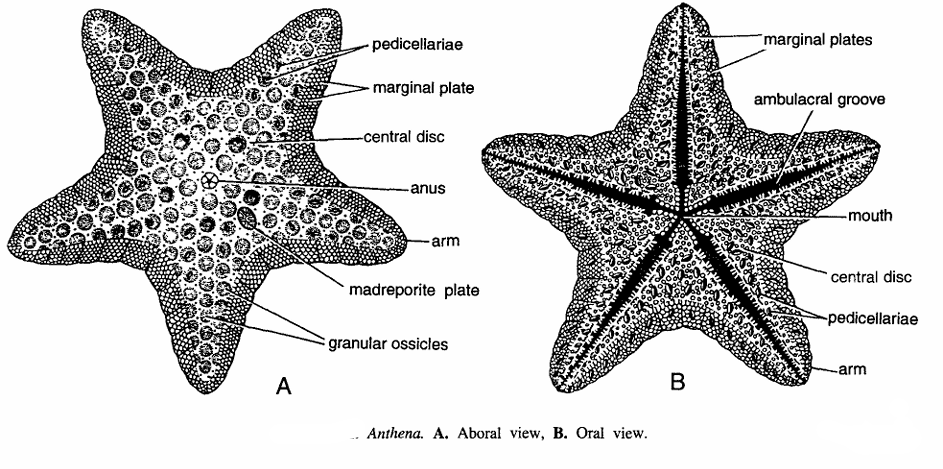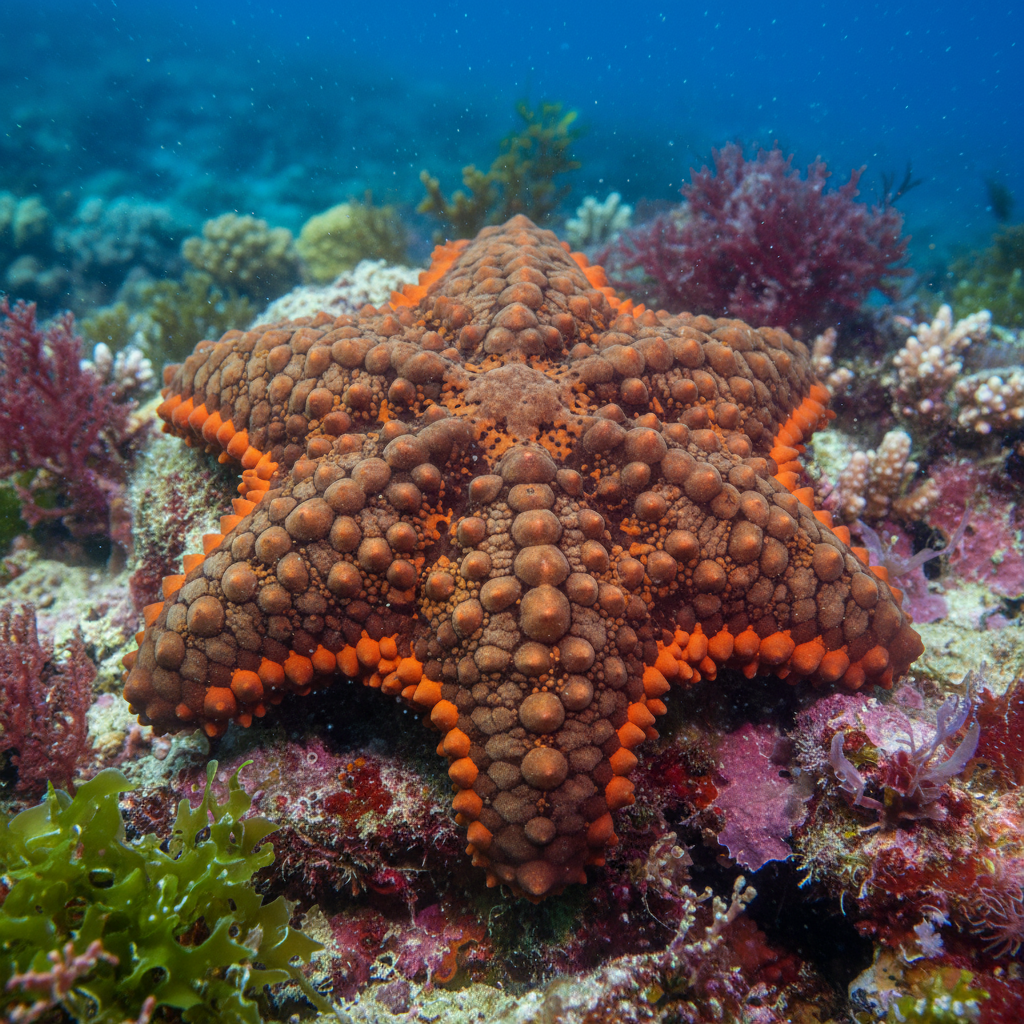Anthenea: Morphology, Classification, Habitat, and Ecological Role of Cake Sea Stars
Anthenea is a genus of sea stars in the family Oreasteridae, commonly called “cake sea stars” due to their characteristic thick, rounded, disc-like bodies. Members of Anthenea are noted for their pentaradial symmetry, striking colors, and adaptability to warm, shallow marine habitats. They are most frequently found off the coasts of Australia and Southeast Asia, where they inhabit coral reefs, seagrass beds, and sandy substrates. These sea stars play important ecological roles as scavengers and predators in benthic ecosystems.
Classification of Anthenea
| Taxonomic Rank | Name | Notable Characteristics |
|---|---|---|
| Kingdom | Animalia | Multicellular, eukaryotic organisms |
| Phylum | Echinodermata | Spiny-skinned marine invertebrates |
| Class | Asteroidea | Sea stars/starfish |
| Order | Valvatida | Robust, thick-bodied sea stars |
| Family | Oreasteridae | Large, colorful, thick-skinned sea stars |
| Genus | Anthenea | Cake/star-shaped sea stars with discoidal bodies |

Habit and Habitat
Anthenea species inhabit warm, shallow tropical and subtropical seas, particularly around coral reefs and sandy lagoons. They are most often observed off northern Australia, Southeast Asia, and extending through the Indo-Pacific region. The robust body allows them to burrow into soft sandy substrates and conceal among seagrasses or corals.
Geographical Distribution
The genus Anthenea is widespread in the Indo-Pacific, especially abundant near the coasts of Australia, the Philippines, Indonesia, and Southeast Asian nations.
General Characteristics
- Commonly called as starfish.
- Animal consists of a relatively large central disc and five relatively short arms, which taper rapidly towards their extremities.
- Body is differentiated into oral and aboral surface. Aboral surface is strongly convex and is having inter-radial depression.
- It is dotted over with several small, rounded tubercles arranged in irregular radiation lines.
- Aboral surface is dotted over with several small rounded granular ossicles arranged in regular radiating lines.
- Flat surface between ambulacral grooves contains plate-like ossicles beset with a number of minute, rounded tubercles or granules, which sometimes assume spiny shape.
- Pedicellariae are also present, which are small, narrow and oblong.
- Calcareous bodies consist of two parallel narrow valves of jaws. Anthena has vertical calcareous and inter-radial partitions.
- Body Shape: Pentagonal to rounded, disc-like shape with short, broad arms and a leathery, thick surface.
- Size: Many species can exceed 20 cm in diameter.
- Coloration: Typically vivid and variable, including orange, yellow, brown, red, or purple, sometimes patterned with spots or mottling.
- Surface: Covered with granules, tubercles, or low spines arranged in patterns.
- Ambulacral Grooves: Located on the oral (under) side, equipped with rows of tube feet for movement and feeding.

Special Features
- Pentaradial Symmetry: Five (sometimes more) arms blending smoothly with the central disc.
- Feeding: Omnivorous scavengers feeding on organic detritus, small invertebrates, and algae.
- Reproduction: Separate sexes with external fertilization; larvae develop into planktonic bipinnaria and brachiolaria forms.
- Regeneration: Capable of regenerating lost arms, contributing to survival.
- Ecological Role: Serve as benthic scavengers and contribute to nutrient recycling in coral reef ecosystems.
Identification
Anthenea species can be identified by their thick, discoidal bodies, arm shape and count, surface texture with characteristic tubercles, and vivid coloration. Size and habitat preferences also aid species differentiation.
Life Cycle and Reproduction
Reproduction involves external fertilization with planktonic larval stages that eventually settle on substrates and metamorphose into juveniles resembling adults. Growth to maturity varies by environmental factors.

Ecological Importance
Anthenea starfish play critical roles in maintaining benthic ecosystem health by scavenging dead organic matter and controlling algae growth. Their presence is an indicator of reef biodiversity and ecological stability.
References
- https://en.wikipedia.org/wiki/Anthenea
- https://www.vedantu.com/biology/scientific-name-of-starfish
- https://byjus.com/biology/scientific-name-of-starfish/
- https://www.marlin.ac.uk/species/detail/1194

